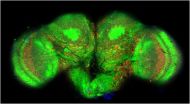(Press-News.org) WASHINGTON, DC, February 24, 2014 — Greater childhood adversity helps to explain why black men are less healthy than white men, and some of this effect appears to operate through childhood adversity's enduring influence on the relationships black men have as adults, according to a new study in the March issue of the Journal of Health and Social Behavior.
"Our findings suggest that childhood adversity launches a lifelong process of relationship and health disadvantage for black men," said lead author Debra Umberson, a professor of sociology and a faculty associate in the Population Research Center at the University of Texas at Austin. "I was surprised at the power of childhood adversity to influence racial disparities in health for men via its detrimental impact on adult relationships."
Umberson said exposure and vulnerability to stress are the two primary ways childhood adversity negatively affects relationships in adulthood.
"Exposure to childhood adversity may cause stress and lead to a sequence of stressors over time that take a cumulative toll on relationships," Umberson said. "In addition, childhood adversity may trigger an enduring pattern of psychological and physiological vulnerability to stress that undermines relationships in adulthood. Past research, including some of my own, has shown that bad relationships often lead to worse physical health."
Titled, "Race, Gender, and Chains of Disadvantage: Childhood Adversity, Social Relationships, and Health," the study relies on data on black and white men and women from a nationally representative longitudinal survey of Americans aged 25 and older. Respondents were interviewed four times during a 15-year period and were asked about childhood adversity (e.g., family economic hardship; parents having marital problems; living with someone who was violent), stress in adulthood (e.g., stressful life events such as divorce or the death of a spouse, child, or parent; chronic sources of stress such as financial or job issues), quality of relationships in adulthood (e.g., with partner/spouse; children; parents), and health in adulthood.
"Black men are exposed to 28 percent more childhood adversity than white men and the negative effect of childhood adversity on the quality of relationships in adulthood is three times stronger for black men than white men," Umberson said. "This pathway from childhood adversity to lower quality relationships in adulthood explains part of the race disparity in health among men, something that has not been recognized in previous research."
Just as white men are healthier than black men, white women are healthier than black women. However, the study revealed that neither childhood adversity nor the quality of relationships in adulthood explain much of the racial disparity in health among black and white women.
"I was surprised that childhood adversity had such a minor impact on black women's health in adulthood, especially since the effect was so strong for black men," Umberson said. "I think this is best explained by women's tendency to seek out social contact in response to stress. Generally speaking, women tend to have more close relationships and to share their feelings with others. This is true for black and white women. Supportive relationships protect health."
Overall, and consistent with prior research, Umberson and her co-authors found that black women are least healthy, followed by white women, black men, and white men.
In terms of policy implications, Umberson said the study suggests policymakers should put a greater emphasis on improving American children's quality of life. "Creating programs that provide children with access to stable environments and nurturing adults at the youngest possible age may be particularly important for black male youth—with health and well-being benefits that last a lifetime," Umberson said.
INFORMATION:
Umberson's co-authors are Kristi Williams, an associate professor of sociology and a faculty affiliate of the Institute for Population Research at The Ohio State University as well as a research associate at the Council on Contemporary Families; Patricia A. Thomas, an assistant professor of sociology and a faculty associate at the Center on Aging and the Life Course at Purdue University; Hui Liu, an assistant professor of sociology at Michigan State University; and Mieke Beth Thomeer, a doctoral candidate in sociology and a Population Research Center trainee at the University of Texas at Austin.
Funding from the National Institute on Aging and the National Institute of Child and Human Development supported this research.
About the American Sociological Association and the Journal of Health and Social Behavior
The American Sociological Association, founded in 1905, is a non-profit membership association dedicated to serving sociologists in their work, advancing sociology as a science and profession, and promoting the contributions to and use of sociology by society. The Journal of Health and Social Behavior is a quarterly, peer-reviewed journal of the ASA.
The research article described above is available by request for members of the media. For a copy of the full study, contact Daniel Fowler, ASA's Media Relations and Public Affairs Officer, at (202) 527-7885 or pubinfo@asanet.org.
Childhood adversity launches lifelong relationship and health disadvantage for black men
2014-02-27
ELSE PRESS RELEASES FROM THIS DATE:
Despite recession, children's health spending increased between 2009-2012, says new report
2014-02-27
Washington, DC – Spending on health care for children covered by employer-sponsored insurance (ESI) increased between 2009 and 2012, rising an average 5.5 percent a year, with more dollars spent on boys than girls, and higher spending on infants and toddlers (ages 0-3) than any other children's age group, finds a new report released today by the Health Care Cost Institute (HCCI). Per capita spending on children reached $2,437 in 2012, a $363 increase from 2009. The study shows a growth in prescription use by children through age 18, as well as a rise in the number of teens ...
Simple lab-based change may help reduce unnecessary antibiotic therapy, improve care
2014-02-27
[EMBARGOED UNTIL THURSDAY, FEB. 27] A simple change in how the hospital laboratory reports test results may help improve antibiotic prescribing practices and patient safety, according to a pilot, proof-of-concept study published in Clinical Infectious Diseases and now available online. No longer routinely reporting positive urine culture results for inpatients at low risk for urinary tract infections (UTIs) greatly reduced unnecessary antibiotic prescriptions and did not affect the treatment of patients who did need antibiotics, the study authors found.
Urine cultures ...
One in 5 US hospitals don't put hand sanitizer everywhere needed to prevent infections
2014-02-27
(NEW YORK, NY, February 27, 2014) – Approximately one in five U.S. health facilities don't make alcohol-based hand sanitizer available at every point of care, missing a critical opportunity to prevent health care-associated infections, according to new research from Columbia University School of Nursing and the World Health Organization (WHO) published in the American Journal of Infection Control. The study, which examined compliance with WHO hand hygiene guidelines in the U.S., also found that only about half of the hospitals, ambulatory care, and long-term care facilities ...
Scientists wake up to causes of sleep disruption in Alzheimer's disease
2014-02-27
Being awake at night and dozing during the day can be a distressing early symptom of Alzheimer's disease, but how the disease disrupts our biological clocks to cause these symptoms has remained elusive.
Now, scientists from Cambridge have discovered that in fruit flies with Alzheimer's the biological clock is still ticking but has become uncoupled from the sleep-wake cycle it usually regulates. The findings – published in Disease Models & Mechanisms – could help develop more effective ways to improve sleep patterns in people with the disease.
People with Alzheimer's ...
Over 80s often over-treated for stroke prevention
2014-02-27
People in their 80s are often prescribed drugs to ward off a stroke when the risk of a stroke is not that high and the drugs have other side effects, finds a perspective published online in Evidence Based Medicine.
People in this age group are being "over-treated," and doctors need to actively rethink their priorities and beliefs about stroke prevention, argues Dr Kit Byatt of the Department of Geriatric Medicine, The County Hospital in Hereford, UK.
Statins and antihypertensive drugs were the most commonly prescribed cardiovascular drugs in the UK in 2006. And they ...
Mental health of most UK troops serving in Afghanistan and Iraq is 'resilient'
2014-02-27
Despite prolonged combat missions to Iraq and Afghanistan, there has been no overall increase in mental health problems among UK soldiers, finds a review of the available evidence, published online in the Journal of the Royal Army Medical Corps.
But certain groups of soldiers do seem to be more vulnerable to mental ill health on their return home, while alcohol problems continue to give cause for concern among regulars, say the researchers from King's College London.
They retrieved published research looking at the psychological impact of deployment to Iraq and Afghanistan ...
Passive smoking linked to increased miscarriage, stillbirth, and ectopic pregnancy risk
2014-02-27
Passive smoking is linked to a significantly increased risk of miscarriage, stillbirth and ectopic pregnancy, finds a large observational study, published online in Tobacco Control.
The risk appears to be cumulative, with risk heightened in parallel with the length of time exposed to second hand smoke, the findings indicate.
It is well known that smoking during pregnancy significantly increases the risks of miscarriage and birth complications. What is less clear is whether passive smoking exerts similar effects, and if there are particularly critical periods of exposure ...
Spotted seal study reveals sensitive hearing in air and water
2014-02-27
Two spotted seals orphaned as pups in the Arctic are now thriving at UC Santa Cruz's Long Marine Laboratory, giving scientists a rare opportunity to learn about how these seals perceive their environment. In a comprehensive study of the hearing abilities of spotted seals, UCSC researchers found that the seals have remarkably sensitive hearing in both air and water.
The findings, published February 26 in the Journal of Experimental Biology, are important for understanding how spotted seals might be affected by noise from human activities in the rapidly changing Arctic ...
Secondhand smoke exposure linked to adverse pregnancy outcomes
2014-02-27
BUFFALO, N.Y. — Secondhand smoking is linked with pregnancy loss, including miscarriage, stillbirth and tubal ectopic pregnancy, according to new research from scientists at Roswell Park Cancer Institute (RPCI) and the University at Buffalo (UB). The study findings, published online by the journal Tobacco Control, mark a significant step toward clarifying the risks of secondhand smoke exposure.
"This study demonstrated that pregnancy outcomes can be correlated with secondhand smoking. Significantly, women who have never smoked but were exposed to secondhand smoke were ...
Febrile illnesses in children most often due to viral infections
2014-02-27
This news release is available in German. Most children ill with fever in Tanzania suffer from a viral infection, a new study published in the New England Journal of Medicine shows. A research team led by Dr. Valérie D'Acremont from the Swiss Tropical and Public Health Institute in Basel and the Policlinique Médicale Universitaire in Lausanne systematically assessed the causes of febrile illnesses in Tanzanian children. According to the results, in most cases a treatment with antimalarials or antibiotics is not required. The finding has the potential to improve the ...

